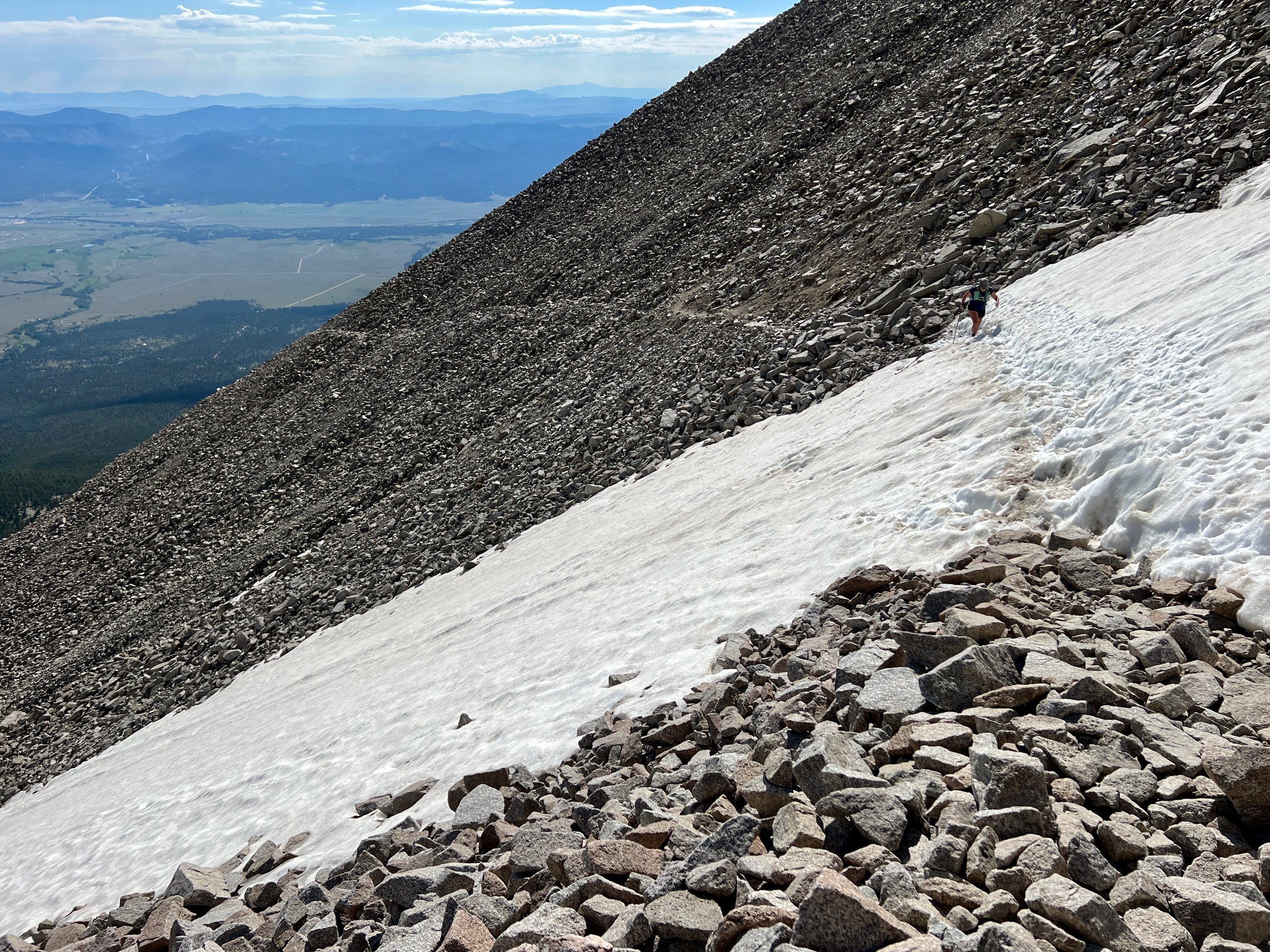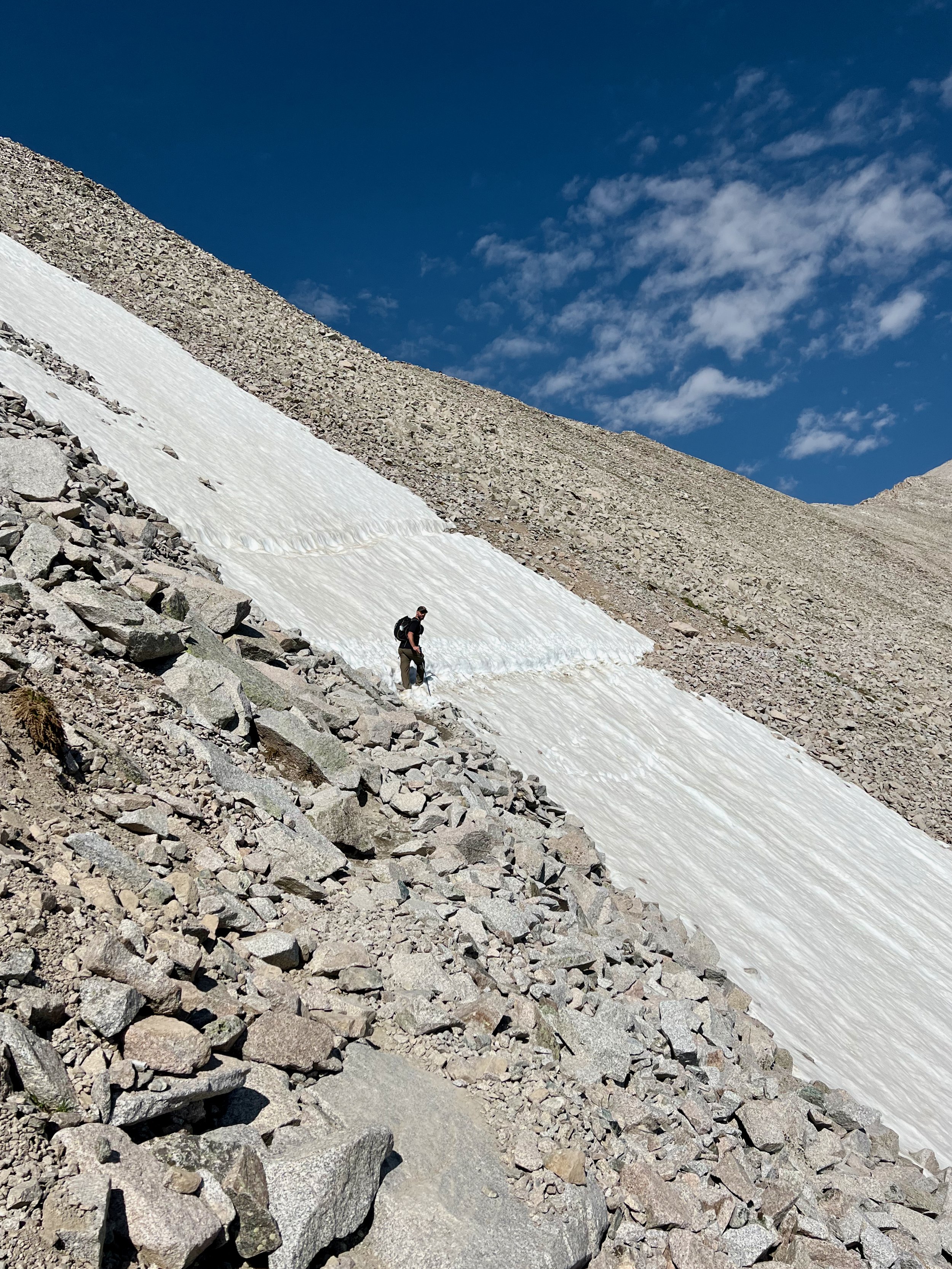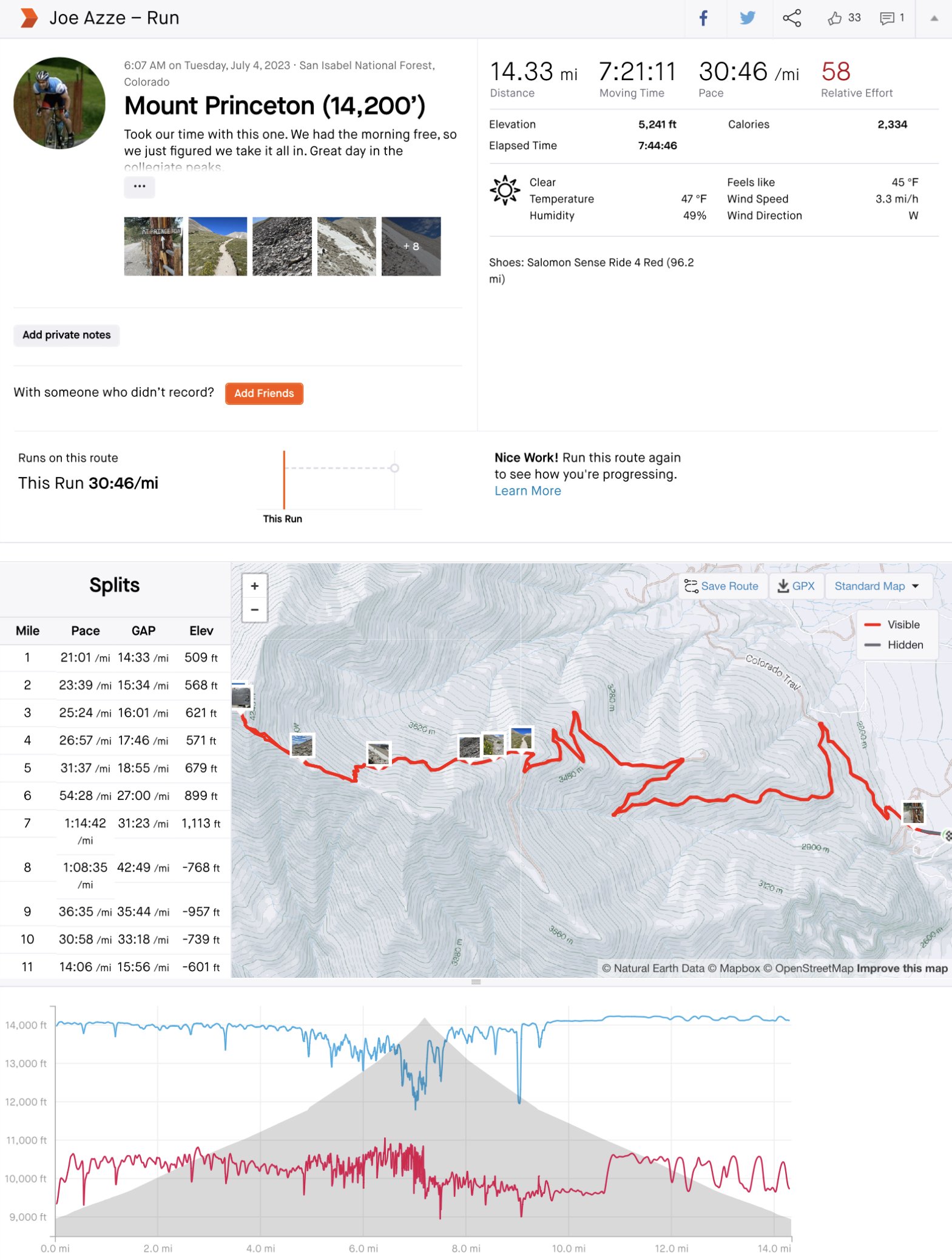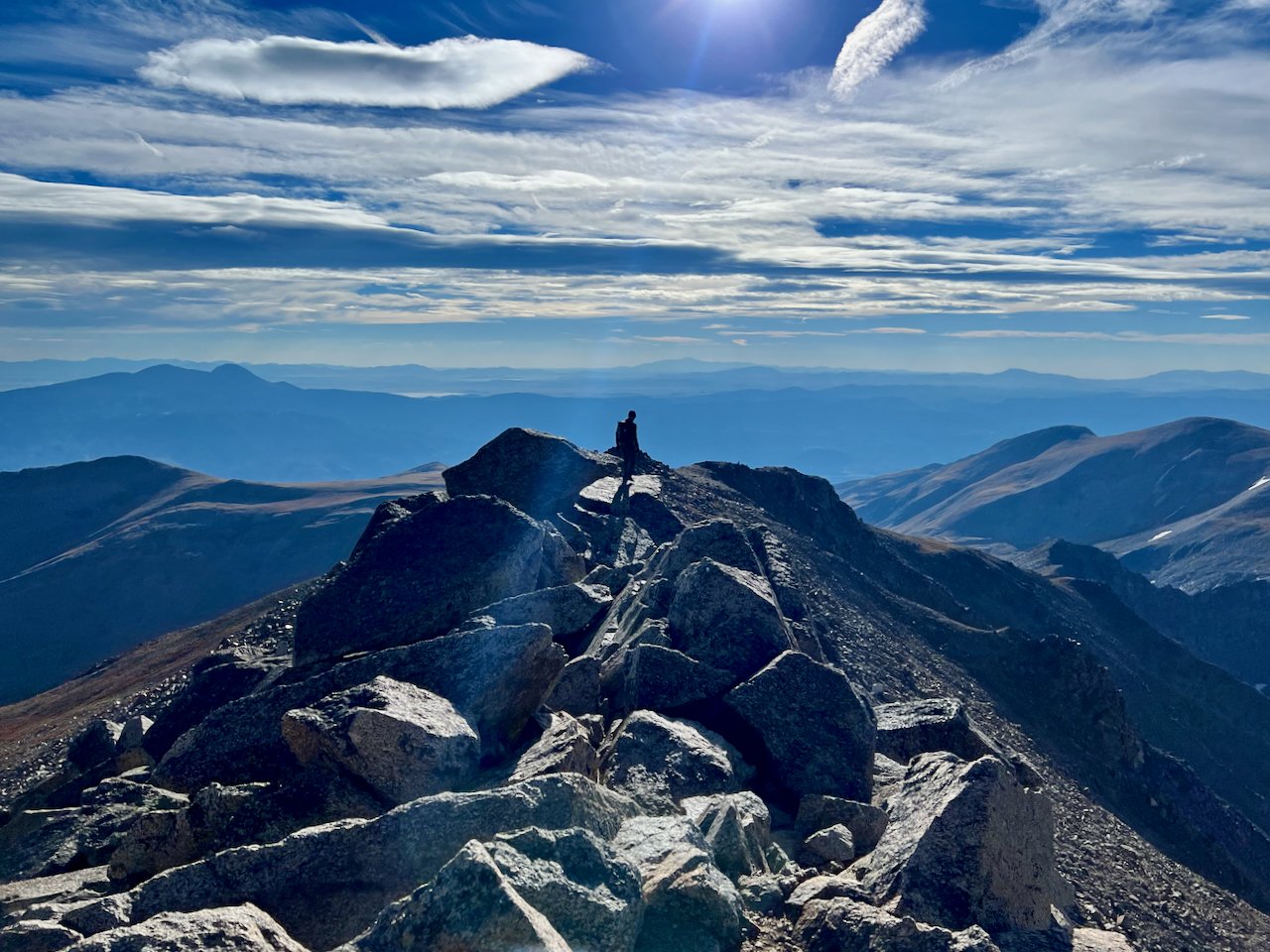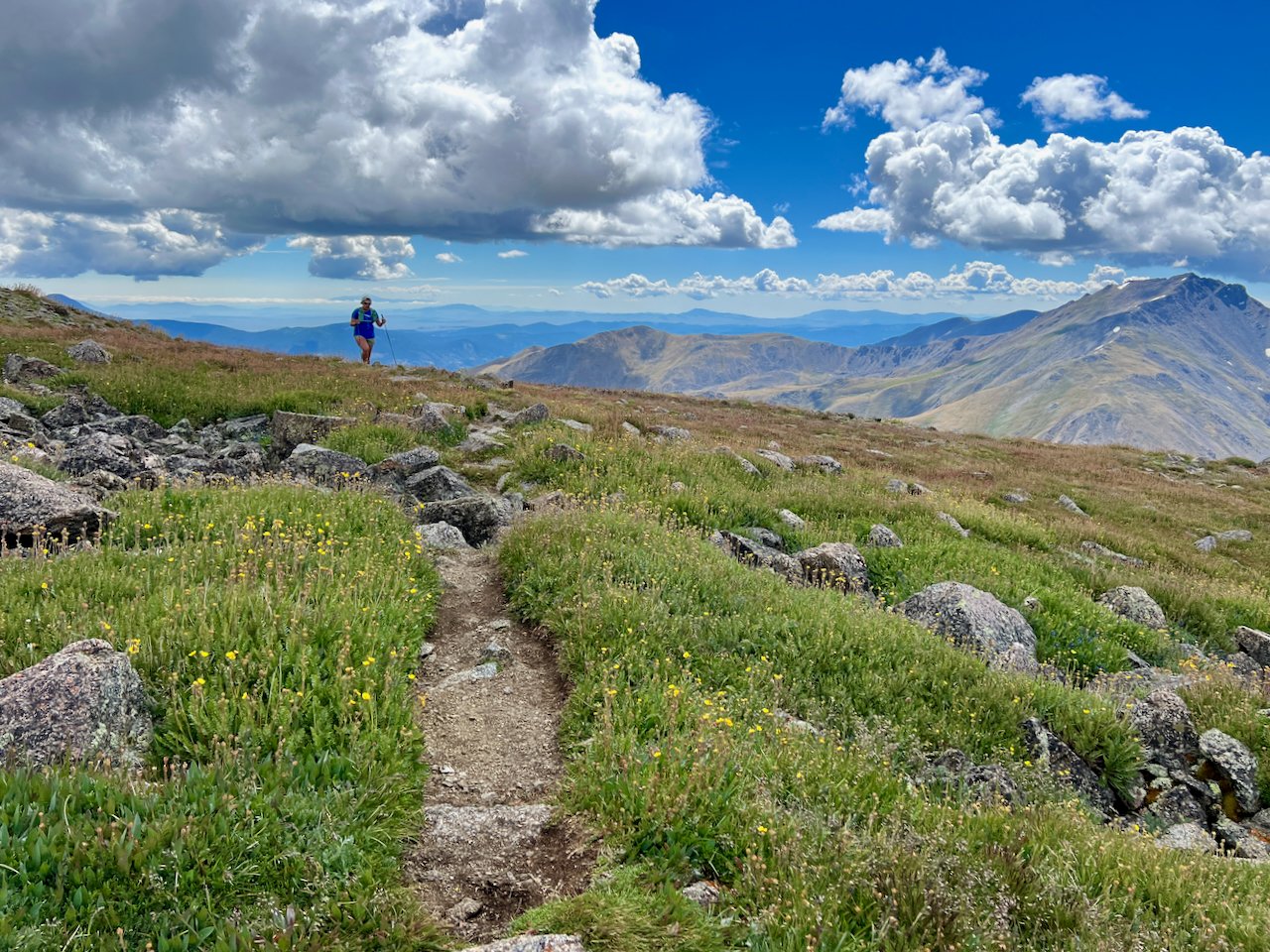Colorado 14er: Mount Princeton (14,200')
As we embark on this 14er adventure project, we’ll probably always choose to hike the dirt roads or take longer approaches to trailheads, on this day we opted to start from the 2WD drive parking lot. As we are quickly learning, Colorado is a 4WD/off road vehicle mecca!
5400 ft of climbing starting from the 2WD lot, between 13-14 miles out and back, accuracy depending on GPS. You get 3,200 ft of climbing starting from the 4WD lot, 6.5 miles round trip but we don’t recommend driving this road. It is a very narrow dirt road and not many areas to allow other vehicles to pass.
We set off with our fully loaded packs at 5:30am. We tend not to travel too lightly as we have been part of many rescue operations and know that traveling super lite is not worth the risk.
Gear: Garmin inReach, waterproof shells, additional layers, hat, gloves, extra calories, 3 liters of water, electrolytes, soft bottle filter, fire starter, bivy, duct tape, backup battery, hardcopy and downloaded map, etc. Remember you’re not only carrying this gear for yourself, but for anyone who may need your help. We are amazed by the amount of unprepared people we encounter, even out here in CO.
We used the 4 mile uphill dirt road as a warm up, lucky for us the road wasn’t busy with 4WD traffic. When you get to the trailhead, the alpine beauty really starts to open up, the views are beautiful. But soon your eyes will get quickly turned away toward your feet as you navigate tricky rocks, packing your patience will be essential.
Even in June steep snowfields may still be present as they were today. Be sure to carry traction devices and an ice tool. It's recommended to take a backcountry course to learn how to self arrest, etc. Don’t forget to check out the trip report section on the very informational14ers.com!
Fitness Tip
Do not attempt to climb a 14er without being adequately conditioned. If you cannot hike up and down mountains for 7 hours at sea level or are an avid trail runner, think twice before attempting. Do not only train to hike uphill, such as using a treadmill, but downhill hiking (eccentric conditioning) practice is extremely important. The strain you place with every footstep fighting gravity, with the additional weight of a pack while going downhill, is real. Also, you may want to seek out a strength coach for additional help. This will increase your overall enjoyment while out on the trails.
Quick trail etiquette tips.
As more people are drawn to the great outdoors, we feel it’s imperative to have respect for each other and the environment.
Hikers have the right of way when climbing.
Mountain bikers yield to equestrians, hikers and runners
All downhill users yield to uphill users.
Pack out what you pack in, including toilet tissue (carry a ziplock).
Dig a hole 6-8 inches deep then bury your waste. Walk 200 feet or 70 big steps away from trails and water sources.
If you notice the summit area to be crowded, please make room for others to tag the summit or tag the summit and hang to have your snack a little further away. Everyone has worked hard and has the right to touch the summit marker, if they choose.
Happy Trails!








